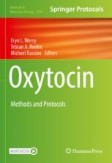Search
Search Results
-
Hormones and Hormones Antagonists
Diabetes mellitus (DM) encompasses a group of metabolic disorders characterized by persistent elevation of blood sugar levels. This condition arises...
-
Epigenetic mechanisms regulate sex differences in cardiac reparative functions of bone marrow progenitor cells
Historically, a lower incidence of cardiovascular diseases (CVD) and related deaths in women as compared with men of the same age has been attributed...

-
Deciphering the roles of triiodothyronine (T3) and thyroid-stimulating hormone (TSH) on cardiac electrical remodeling in clinical and experimental hypothyroidism
Hypothyroidism is the most frequent endocrine pathology. Although clinical or overt hypothyroidism has been traditionally associated to low T3 / T4...

-
Sexual dimorphism in cardiac remodeling: the molecular mechanisms ruled by sex hormones in the heart
Heart failure (HF) is growing in prevalence, due to an increase in aging and comorbidities. Heart failure with reduced ejection fraction (HFrEF) is...

-
Brain Control over Pituitary Gland Hormones
Endocrine organs release their products, hormones, into peripheral blood to travel great distances to exert their biological effects. The brain is...
-
Cytokine Profile and Concentrations of Metabolic Hormones in the Blood of Overweight Men with Coronary Arteriosclerosis
Plasma concentrations of cytokines and metabolic hormones and their association with vulnerable atherosclerotic plaques were studied in 36 overweight...
-
Cardiac hypertrophy that affects hyperthyroidism occurs independently of the NLRP3 inflammasome
Cardiac hypertrophy (CH) is an adaptive response to maintain cardiac function; however, persistent stress responses lead to contractile dysfunction...

-
Influence of Exercise on Cardiac Metabolism and Resilience
The numerous health benefits that derive from exercise are associated with remarkable changes in metabolism. With respect to the heart, exercise...
-
Morpho-Functional Study of Cardioactive Neurohormones and Some Other Neuropeptides in the Nervous and Cardiac Systems of Rats in Normal and Pathological Conditions
AbstractThis review presents data from multilateral studies, aimed at determining the localization, release and the function of the cardioactive...

-
Effect of diminazene on cardiac hypertrophy through mitophagy in rat models with hyperthyroidism induced by levothyroxine
Hyperthyroidism is associated with the alteration in molecular pathways involved in the regulation of mitochondrial mass and apoptosis, which...

-
Extracellular Vesicles and Cardiac Aging
Global population aging is a major challenge to health and socioeconomic policies. The prevalence of diseases progressively increases with aging,...
-
Role of Hormones During Gestation and Early Development: Pathways Involved in Developmental Programming
Accumulating evidence suggests that an altered maternal milieu and environmental insults during the intrauterine and perinatal periods of life affect...
-
The Effect of Oxytocin on Intracellular Ca2+ Release in Cardiac Cells
Ca2+ signaling is vital for the proper functioning of all cells, including cells of the cardiovascular system. Membrane receptors for many hormones...
-
The Role of mTOR in Doxorubicin-Altered Cardiac Metabolism: A Promising Therapeutic Target of Natural Compounds
Doxorubicin (DOX) is commonly used for the treatment of various types of cancer, however can cause serious side effects, including cardiotoxicity....

-
Inhibition of tartrate-resistant acid phosphatase 5 can prevent cardiac fibrosis after myocardial infarction
BackgroundMyocardial infarction (MI) leads to enhanced activity of cardiac fibroblasts (CFs) and abnormal deposition of extracellular matrix...

-
Transcutaneous vagus nerve stimulation ameliorates cardiac abnormalities in chronically stressed rats
Chronically stressed patients often have low vagal tone and increased levels of proinflammatory cytokines, which increase their risk for develo**...

-
Development and Validation of a Nomogram Model for the Risk of Cardiac Death in Patients Treated with Chemotherapy for Esophageal Cancer
The primary cause of mortality in esophageal cancer survivors is cardiac death. Early identification of cardiac mortality risk during chemotherapy...

-
P2X7 receptor is essential for ST36-attenuated cardiac fibrosis upon beta-adrenergic insult
P2X7 receptor (P2X7R) plays an important role in modulating inflammation and fibrosis, but information is limited whether Zusanli (ST36) can inhibit...

-
Sex- and age-related differences in renal and cardiac injury and senescence in stroke-prone spontaneously hypertensive rats
BackgroundSex differences play a critical role in the incidence and severity of cardiovascular diseases, whereby men are at a higher risk of...

-
Sex-related differences in delayed doxorubicin-induced cardiac dysfunction in C57BL/6 mice
Cancer survivors may experience long-term cardiovascular complications due to chemotherapeutic drugs such as doxorubicin (DOX). The exact mechanism...

